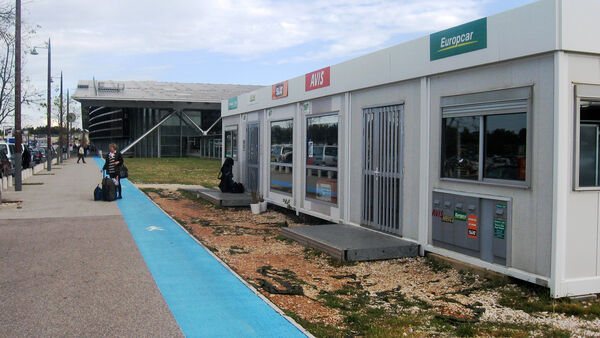Tips for Picking Up and Returning a Rental Car

By Rick Steves
Even if you've got plenty of experience renting cars in the US, it pays to be on your toes when picking up a rental car overseas, and when dropping it off — if only because you're more likely to be dealing with jet lag, a possible language barrier, and/or an unfamiliar car model.
When Picking Up Your Car
When you arrive at the rental counter, ask for a copy of the contract in English if it's not provided as a matter of course. If you haven't already paid for the car, know what your quote is in the local currency. Be sure to decline any offer of "dynamic currency conversion."
If you can, avoid prepaying for your first tank of gas (although some offices won't let you out of this). Prepaying for fuel is always a rip-off, since agencies charge far more than the going rate. The only upside is that you can return the car with a nearly empty tank.
Be sure to check the entire vehicle for scratches or dents. Rental agencies in Europe are very strict when it comes to charging for even minor damage, so be sure to mark everything on the checklist. Some travelers photograph all dings and scratches, even the tiniest ones (be sure the date/time stamp is on). If any damage is not already noted on the rental agreement, return to the counter to make adjustments.
Before you drive off, get to know your car. Try out all the features and gadgets: Run the front and rear windshield wipers and sprayers, figure out whether the headlights come on automatically with the engine, switch the headlights to high-beam, get comfortable with the gearshift (including shifting into reverse), check if you have a locked fuel cap, and so on.
This is also a good time to quiz the rental agent on a few things, including:
- grace period for drop-off, if any
- how to use features such as the alarm system, lights, radio, GPS, etc.
- what type of fuel the car takes (diesel vs. unleaded), the local term for that fuel and how it's labeled at filling stations, and how to release the gas cap
- for diesel cars, how to add the fuel additive called AdBlue (commonly used to reduce harmful exhaust gases); if your car runs out of AdBlue, it may not start
- location of proof-of-insurance "green card" and other paperwork
- whether your car has a valid toll-highway vignette (if needed) or a transponder for electronic toll collection
- info on making repairs and any included emergency roadside services
- location of spare tire and directions for using it (don't accept a car without a spare)
- location of breath-testing kit for measuring alcohol levels (required in France, included with rental or available at counter for small fee)
Before leaving, make sure the tank is full and drive around the parking lot for a few minutes to test rearview mirrors, the gearshift and clutch, backing up, and the lights and signals.
When Dropping Off Your Car
Be on time to drop off your car or you could be charged an extra day's rent. Most companies allow only a 30-minute grace period, and once that's up you'll be liable for another full day's rental. If you know you'll be late, notify the rental company in advance.
Unless you've already prepaid for a tank of gas, top up your car before returning it. If you don't, you may end up paying more than double the going rate, plus an additional "refueling fee." To avoid last-minute hassles, I check online in advance for gas stations close to my drop-off point. Save your final gas receipt as proof that you filled the tank, and don't toss it until you've seen your credit-card bill.
Once you're at the rental office, inspect the car with the attendant to be sure there are no new problems. Some drivers take pictures of the vehicle as proof of its condition (an especially good idea at unstaffed after-hours drop-off points). Ask for a copy of the final condition report and keep it until you've seen your credit-card statement. Unexpected charges that show up on your credit-card statement are easier to dispute if you have good documentation on hand.
If you're relying on your credit card's collision coverage and you have a balance to pay at the returns desk, remember to use that same card — using a different card could invalidate your coverage.

